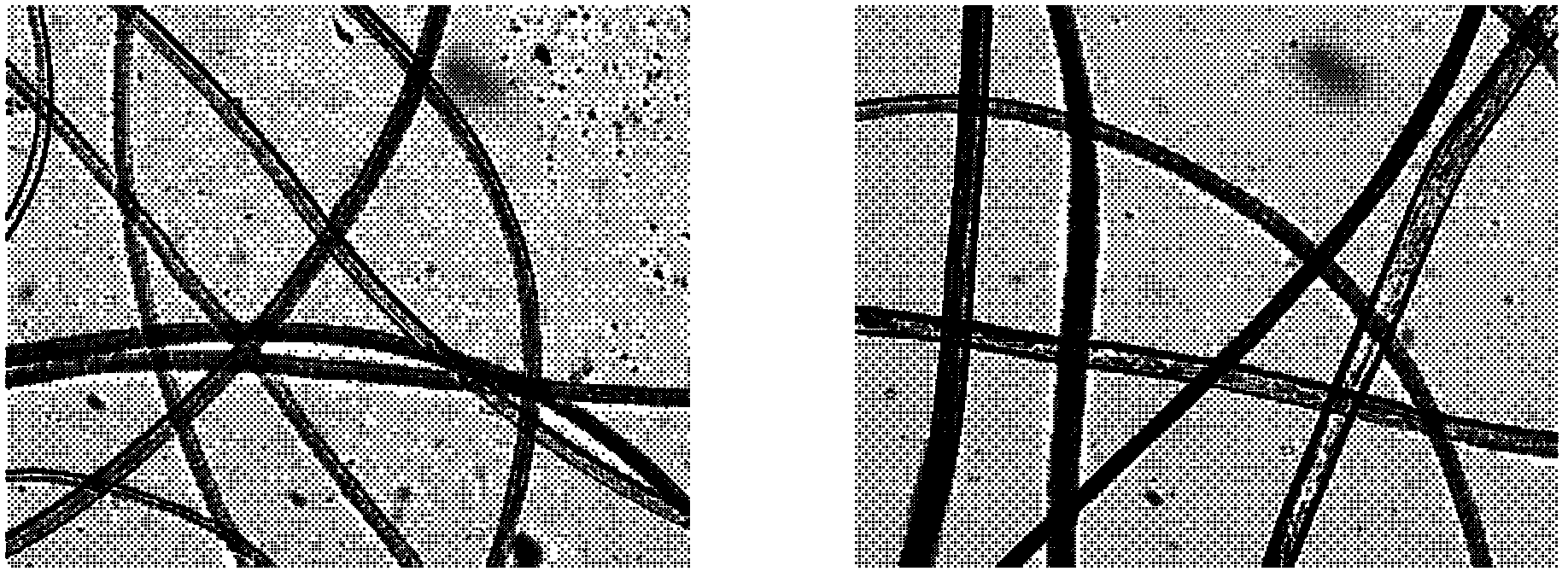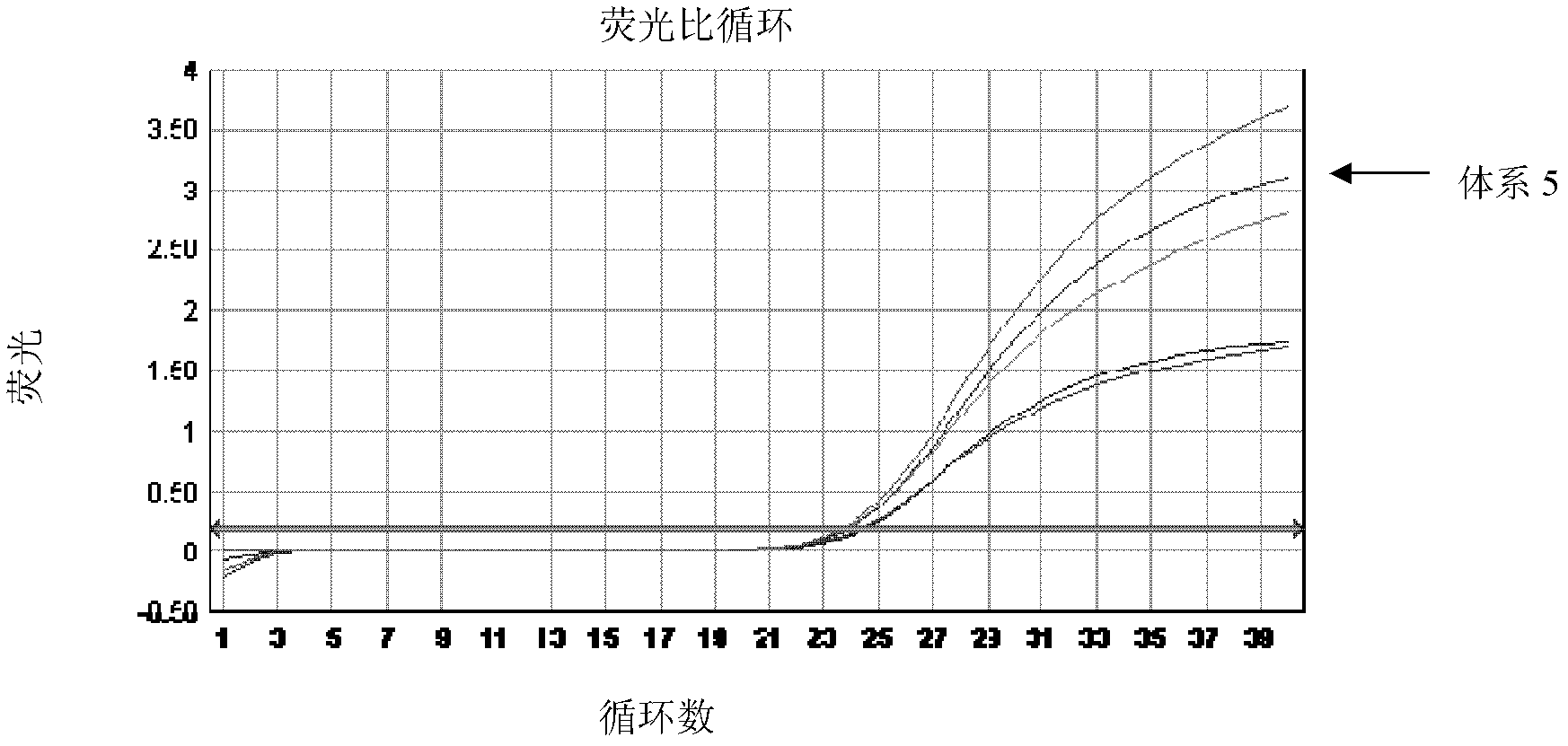Fluorescent quantitative PCR (Polymerase Chain Reaction) qualitative detection method for yak-derived fiber composition
A fluorescent quantitative and fiber-based technology, applied in the field of bioengineering, can solve the problems of high cost, unclear scales, time-consuming and labor-intensive electron microscopy, etc., and achieve the effects of good sensitivity, overcoming unclear scales, and high cost
- Summary
- Abstract
- Description
- Claims
- Application Information
AI Technical Summary
Problems solved by technology
Method used
Image
Examples
Embodiment 1
[0054] 1. Design of primers and probes for real-time fluorescent PCR amplification of yak components
[0055] The sequences of mitochondrial 12SrRNA genes of goats, sheep and yaks were compared, and appropriate sequences were selected for primer design. The size of the amplified product of yak-derived fiber component-specific primers was 65 bp.
[0056] The sequences of specific primers and probes are as follows:
[0057] YakF: 5'-AAGCATCTACACCCCAGTGAGAAT-3' (SEQ ID NO: 1)
[0058] YakR: 5'-GCTTGATGCCAGCTCCTCTT-3' (SEQ ID NO: 2)
[0059] Pyak: FAM-CCCTCTAGGTTGTTAAAAT-MGB (SEQ ID NO: 3)
[0060] At the same time, common primers shared by yaks, goats, and sheep were designed. The size of the amplified product of the universal primers is 88bp. The sequences of the universal primers and probes are as follows:
[0061] GsyF: 5'-GGGTTTACGACCTCGATGTTG-3' (SEQ ID NO: 4)
[0062] GsyR: 5'-ACGTAGGACTTTAATCGTTGAACAAA-3' (SEQ ID NO: 5)
[0063] Pgsy: FAM-ACCGCTATCAAAGGTT-MGB (SEQ ID N...
PUM
 Login to View More
Login to View More Abstract
Description
Claims
Application Information
 Login to View More
Login to View More - R&D
- Intellectual Property
- Life Sciences
- Materials
- Tech Scout
- Unparalleled Data Quality
- Higher Quality Content
- 60% Fewer Hallucinations
Browse by: Latest US Patents, China's latest patents, Technical Efficacy Thesaurus, Application Domain, Technology Topic, Popular Technical Reports.
© 2025 PatSnap. All rights reserved.Legal|Privacy policy|Modern Slavery Act Transparency Statement|Sitemap|About US| Contact US: help@patsnap.com



